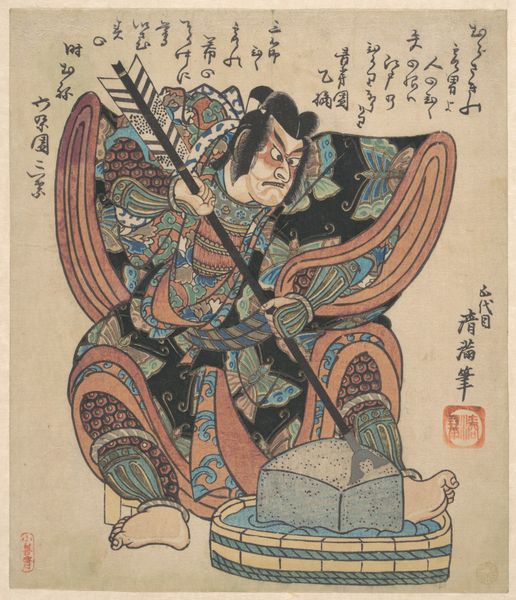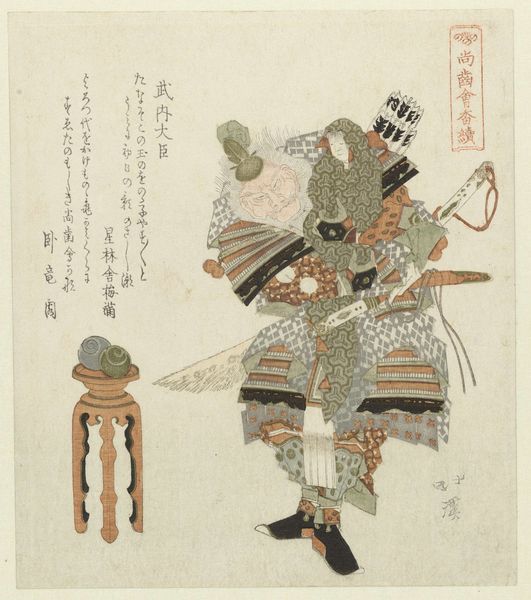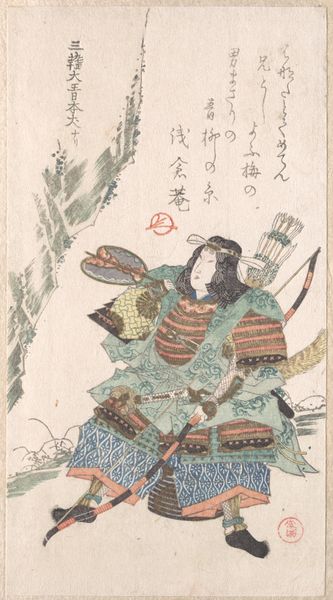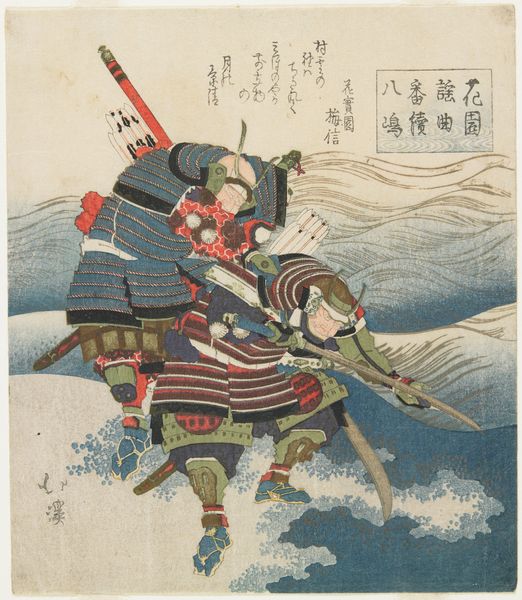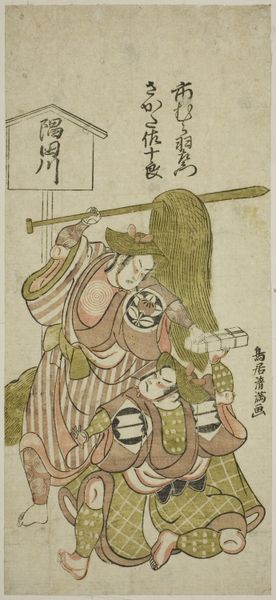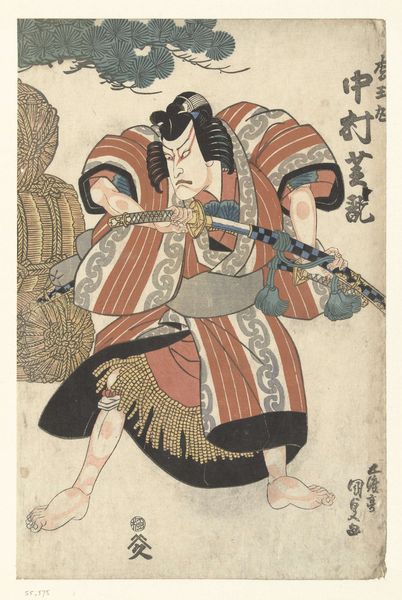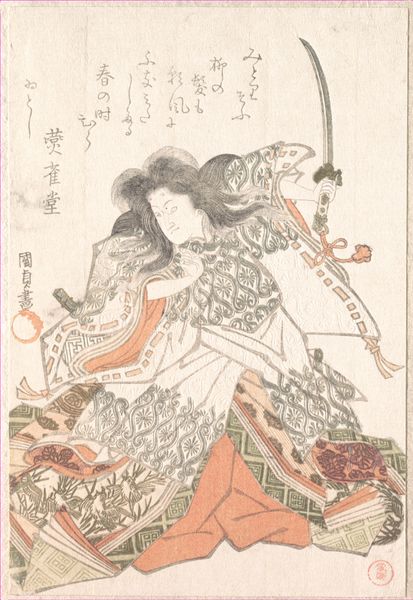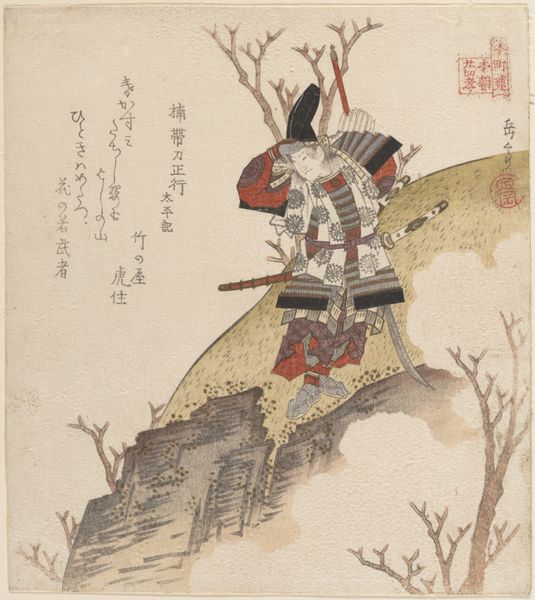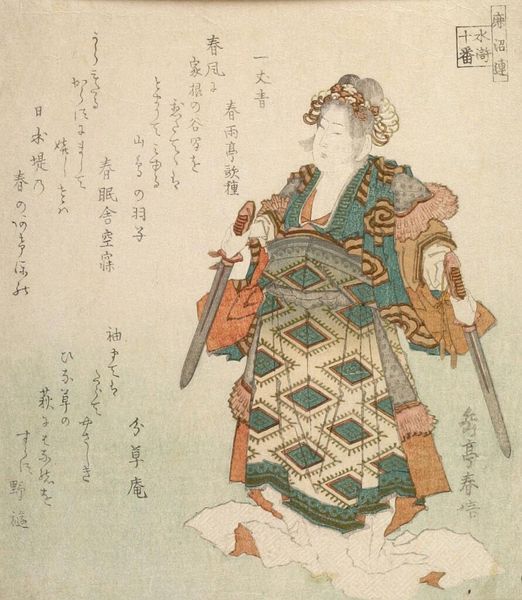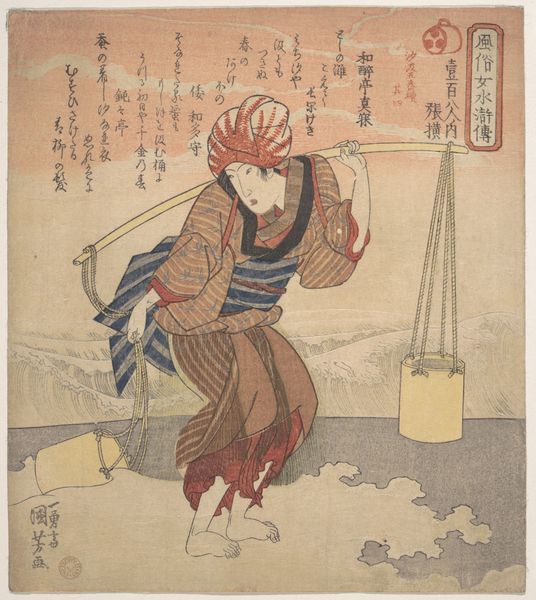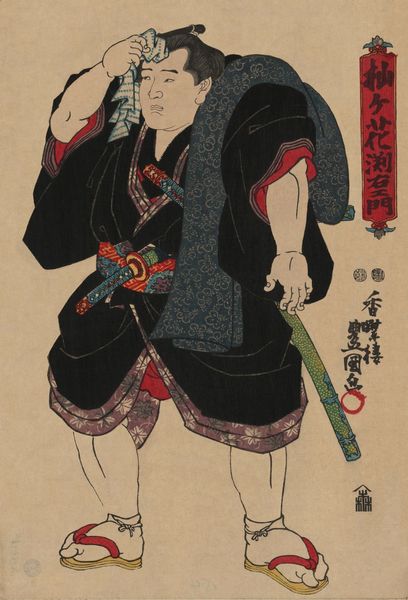
print, woodblock-print
#
narrative-art
# print
#
caricature
#
asian-art
#
caricature
#
ukiyo-e
#
figuration
#
woodblock-print
Dimensions: Vertical ōban; Image: 14 3/4 × 10 1/8 in. (37.5 × 25.7 cm)
Copyright: Public Domain
Editor: This woodblock print, *Akashi Ridayu Hidemoto*, by Utagawa Kuniyoshi, was created sometime between 1838 and 1858. I'm really drawn to the subject's dynamic pose and the, almost aggressive, use of color. It definitely captures your attention. How would you interpret this work, especially given its time period? Curator: Well, at first glance, this appears as a theatrical portrait rooted in the Taiheiki—the Chronicle of Great Peace—and rendered with the expressive exaggerations inherent in Ukiyo-e. It goes beyond a mere illustration, though. Note the sledgehammer, the distinctive armor, the discarded hat at his feet... all loaded with symbolism. What emotional resonances do these elements trigger in you? Editor: I guess it conveys power and determination...maybe even a bit of recklessness? Is the sledgehammer significant beyond being a tool of strength? Curator: Absolutely! The sledgehammer carries the weight of folk legends. Often associated with breaking down barriers—both literal and metaphorical. This suggests that the depicted figure overcame significant obstacles. Notice the contrast of the sturdy, straw-like coat with the delicate irises, alluding to the beauty amidst the brutal warrior life. Editor: Oh, I hadn’t considered that the irises might be symbolic too! The figure looks so intense; I was only focusing on that. Curator: Indeed. Kuniyoshi masterfully manipulates recognizable archetypes, mixing popular narratives with iconic representation to speak volumes about the warrior's spirit but, also, resilience and societal memory during times of unrest. And the text included in the block printing certainly provides contextual layers of meaning, narrative cues and additional emotional expression. What are your feelings now about the piece after hearing more of its story? Editor: Now that I know to look beyond just the surface image, I am struck at how much story and cultural memory is packed into a single print! Thank you.
Comments
No comments
Be the first to comment and join the conversation on the ultimate creative platform.

